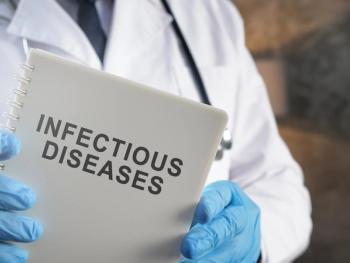
Hepatitis B Coinfection with HIV Requires Vigilant Screening, Treatment
A new study has been published in which researchers attest to the importance of screening vigilance in regards to HIV and HBV.
An invited review published in the International Antiviral Society–USA’s journal Topics in Antiviral Medicine explores epidemiology, natural history, coinfection management, and prevention.
Maria A Corcorran, MD, assistant professor, and H. Nina Kim, MD, MsC, professor, both of the department of medicine’s allergy and infectious diseases division at the University of Washington in Seattle conducted the review.
According to the authors, HBV infection continues to significantly impact global health despite the availability of antivirals and vaccination. The disease can lead to “acute and chronic hepatitis, liver fibrosis, cirrhosis, hepatocellular carcinoma (HCC), and end-stage liver disease (ESLD),” researchers said. In 2019 there were 820,000 deaths caused by HBV globally.1 HBV is common among individuals living with HIV due to similar transmission routes, researchers said. It is estimated that between 8 and 10% of people living with HIV have an HBV coinfection.1
Corcorran and colleagues noted that the Western Pacific region has the highest prevalence of coinfection at 11.4%; the sub-Saharan African region has the next highest rate at 10%, according to the World Health Organization (WHO).1 The authors said HBV is mostly transmitted perinatally in these high-prevalence areas. Researchers said HIV/HBV coinfection rates “are broadly similar across different HIV risk groups, including individuals engaging in heterosexual sex, pregnant persons, men who have sex with men (MSM), and children.”1 Areas with the lowest prevalence of coinfection are the European region (6.7%) and the Americas (5.3%).1 Unprotected sex and intravenous drug use are the most common methods of transmission in low prevalence areas, which have very low rates of mother-to-child transmission, the authors said.
Screening Essential
Researchers said that coinfected patients experience faster progression of liver disease, higher risk of HCC, liver-related mortality, and all-cause mortality than those with HBV infection alone, so they urgently need HBV screening and treatment. “Screening identifies not only individuals who need treatment for HBV infection but also those who would benefit from HBV vaccination,” the reviewers wrote. The American Association for the Study of Liver Disease (AASLD) urges HIV-Positive individuals to get comprehensive HBV screening, including tests for HBsAg, anti-HBc, and anti-HBs.1 Further testing, such as HBV DNA levels and HBeAg is recommended for those who test positive for HBsAg, researchers noted.
Timely fibrosis staging and regular HCC screening are important interventions to detect and prevent complications arising from HBV-related liver disease for patients with HIV/HBV coinfection. The authors said this is because they are more likely to progress toward cirrhosis, ESLD, and HCC faster.
Treatment
Tenofovir, available as either Tenofovir disoproxil fumarate (TDF) or Tenofovir alafenamide (TAF), is the main therapy for coinfected patients due to its potency and high resistance barrier.1 While antiviral therapy is not a functional cure for HBV infection, researchers said studies have demonstrated that sustained HBV suppression can significantly reduce the risk of liver-related complications. Despite the availability of effective treatment, HBV infection is a significant contributor to liver-related deaths among people with HIV, Corcorran and colleagues said.
Vaccination
Leading medical guidelines recommend universal HBV vaccination for patients infected with HIV alone to prevent HBV. Researchers said this recommendation extends to those with isolated anti-HBc antibodies, ensuring comprehensive protection against potential HBV exposure. Corcorran and colleagues noted that HBV vaccination rates remain low for people living with HIV. “For example, in a nationally representative cohort of more than 18,000 adults receiving care for HIV infection between 2009 and 2012, more than one-third of individuals did not have documentation of HBV infection, immunity, or vaccination, and less than 10% of individuals eligible for the HBV vaccination received it during the study period,” the authors said. 1,2
The review illustrates the seriousness of HBV infection among individuals with HIV and emphasizes the need for heightened provider vigilance in screening, management, and prevention.
References
1. Corcorran MA, Kim N. Chronic hepatitis B and HIV coinfection. Top Antivir Med. 2023;31(1):14-22.
2. Weiser J, Perez A, Bradley H, King H, Shouse RL. Low prevalence of hepatitis B vaccination among patients receiving medical care for HIV infection in the UnitedStates, 2009 to 2012. Ann Intern Med. 2018;168(4):245-254.
Newsletter
Pharmacy practice is always changing. Stay ahead of the curve with the Drug Topics newsletter and get the latest drug information, industry trends, and patient care tips.

















































































































